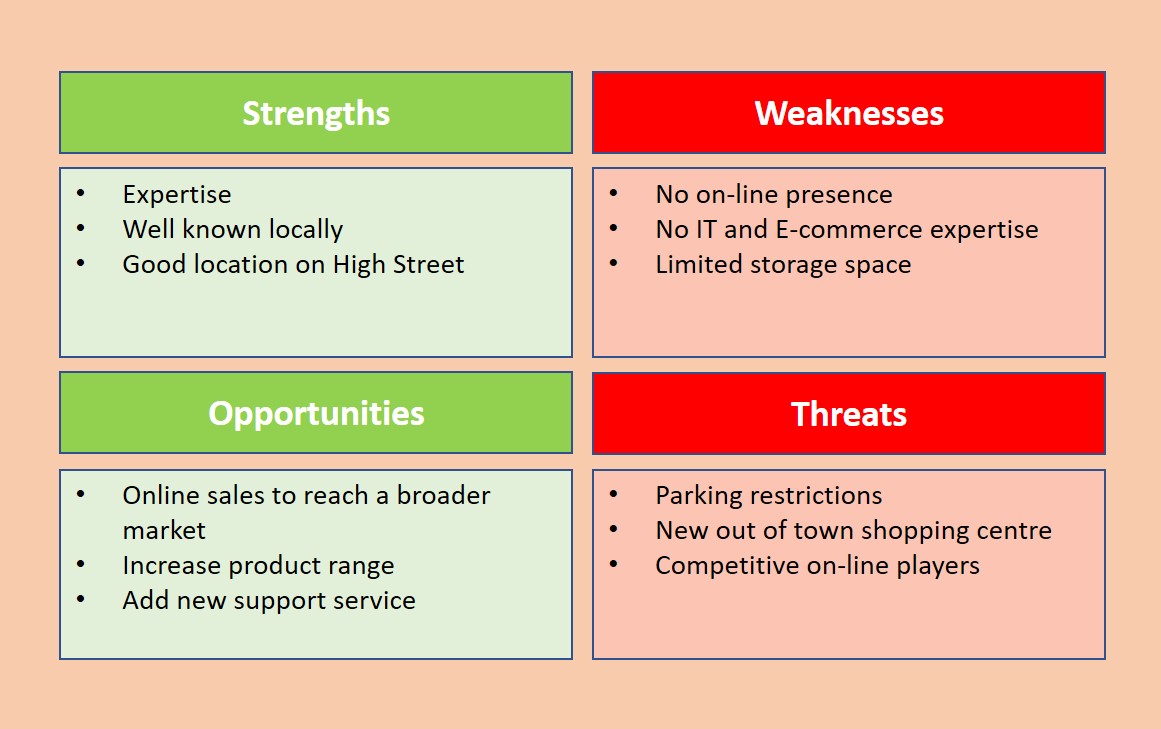Taking a Selfie of your business
SWOT is one of the easiest marketing tools to use, it’s also one of the most useful.
It uses a simple matrix, each cell listing attributes applicable to your entire business, part of it, or to an individual product or service.
- Strengths and Opportunities are positive aspects
- Weaknesses and Threats are negative
- Strengths and Weaknesses relate to the business, product or service itself
- Opportunities and Threats, to the business environment
The SWOT process gets us thinking about all four factors, to avoid clouded judgement, it’s useful to get acquaintances to repeat the process for you.

Strengths
Here you list all of the strengths of your business. This can be skills, brand strengths, technical advantages, patents, resources etc. Be careful to only list things that have a real value in the market. Having a skill that there is no demand for, is not a strength. Look at your competitors and list the advantages you have over them.
Opportunities
As the title suggests, here you should list areas where you can grow and expand, primarily because of changes in the marketplace. For example if your business is in house furnishing, there are going to be opportunities if there is a new housing development close by.
Weaknesses
Be honest! List anything relating to your business that is holding you back. This can be lack of expertise, space, funding or that you lack presence, you need more marketing so people know about you.
Threats
Here you should list external factors that could impact your business. If you sell sandwiches to local office workers, you are likely to suffer if the offices where they work closes or opens a staff canteen.
Interpreting Results
Once the exercise is complete, take some time analysing the results. It’s not unusual to find contradictions;
- Something you list as a strength, can also be a weakness or linked to a threat. For example, in the example SWOT shown, location was listed as a strength, but it also lacked space for expansion and had parking issues
- Skills can be over estimated in strengths, make sure skills shortages are listed under weaknesses
- Don’t forget to be honest about your marketing, it’s easy to list harder attributes of a business, listing the softer aspects such as image, reputation and awareness is harder
Benchmarking
It can be useful to carry out the same exercise on your main competitors, make sure you are not being too biased about your own pluses and their negatives. By doing an “honest” analysis you will highlight the areas you need to improve.






